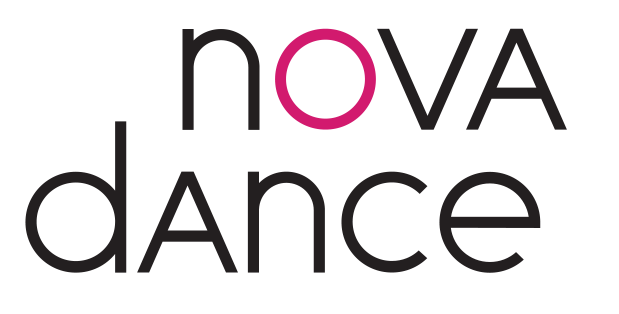Digging Deeper: একসঙ্গে / Akshongay –An Artistic Pairing for the Ages
Brannavy Jeyasundaram is a writer and museum professional living in Toronto. Her writing on cultural memory can be found in The Local, Briarpatch, Jacobin, and Tamil Guardian, among other places. In this article, originally published in the Nov/Dec issue of Dance Current, she explores the relationship of Bhattacharya and Laberge-Côté as creators and collaborators.
Jeyasundaram was the writer and curator of the 2023 book We Will Remember This: Nova Bhattacharya’s Svāhā!
Photo by Dahlia Katz
“I’m in a lavender bubble bath with Nova!” says Louis Laberge-Côté in a rehearsal for Akshongay, a 2013 production performed, directed and choreographed by Laberge-Côté and Nova Bhattacharaya. “Louis is dying and I’m taking his temperature,” says Bhattacharaya. The two are rehearsing an intimate floor sequence from the third act. Amy Hampton, the rehearsal director, just posed a question around intention.
Still on the floor, Bhattacharya and Laberge-Côté face each other under a muted spotlight with their legs intertwined. They hastily grip each other's arms as if discovering the other’s flesh in secret. Their responses to Hampton’s question become a motif for the sequence and embeds itself into future rehearsals as the “Lavender Fever Section.”
It is this quality of whimsy and trust that defines Laberge-Côté and Bhattacharya’s nineteen-year-long artistic partnership. A pairing that transcends artistic disciplines and deliberately avoids the fetishistic guise of “fusion dance” or “East meets West.”
Formally trained in modern and contemporary dance, Laberge-Côté is an alumni of the School of Toronto Dance Theatre (STDT) and a former member of its affiliated company Toronto Dance Theatre (TDT). Bhattacharya is a bharatanatyam dancer who was among the first students in Toronto to receive training from Indian classical dance luminary, Menaka Thakkar. Laberge-Côté hailed from Québec City, Bhattacharya was raised in Scarborough. Their point of connection can be traced to a spin.
In 2000, Bhattacharya performed her acclaimed solo Maskura as part of the now defunct Series 8:08 in Toronto; Laberge-Côté watched in the audience. She performed a spiral movement that remains seared in his memory. “It was very Graham-like,” he says. The magnetic connection between her eyes and hand gestures, and the characteristic of Bharatanatyam also struck Laberge-Côté as profoundly expressive.
A few months later, Bhattacharya witnessed Laberge-Côté in one of his first Toronto Dance Theatre performances, Severe Clear. His intensity and vigour stood out to Bhattacharya and what began as a post-show conversation soon turned into a studio session and eventually four collaborative productions; Yirri Birri Birds of the Yago Bago (2003), Lingua Franca (2006), Romeo and Juliet Before Parting (2006), and the four-time Dora award nominated Aksongay (2013). Together, they have graced over 100 stages and toured across the country.
The spirit of their collaboration lies in improvisational structures that bridge their movement vocabularies and personal histories. One such exercise is called “copy-copy,” a blend of "mirroring" and "shadowing" where they replicate each other’s physicality in sequence. This exercise led to the formation of an entire section of their first collaboration Yirri Birri Birds of the Yago Bago.
The reciprocity and compulsory attention rooted in improvisational practice serves as a shared language between their varied movement styles. Bhattacharya and Laberge-Côté have even invented their own exercises such as “first-third” that calls on one of them to strike a pose and the other to respond while continuing to layer in a parallel manner. For instance, Bhattacharya will lean backward in prenkhana and Laberge-Côté will stretch his left leg above the waist — this will continue until they are in conversation.
It must be understood that their exchange extends beyond physical material. Akshongay acutely weaves mythologies from Bhattacharya and Laberge-Côté respective Bengali and French-Canadian backgrounds to tell a story of emancipatory love. In it, Bhattacharya channels the quiet rage of Lord Shiva and Parvati’s Thandavam (duet) while Laberge-Côté imagines a love story obstructed by the ocean, an allegory to medieval lullaby Isabeau s’y promène. They pour over source materials and bring photographs, poems and films to the studio for mutual learning. It is this hunger and humility that deters their collaboration from becoming fetishization.
When asked what advice they offer for emerging artists in search of meaningful collaboration Bhattacharya says: “Creating is hard, it is very easy to get sucked up into the seriousness of it.” To which Laberge-Côté adds: “Collaborate with people that will make you laugh.” And they do. Bhattacharya and Laberge-Côté are great friends with a sentient, emotional trust they have spent years building. Perhaps in the end, true artistic partnership is reminding each other of laughter or a feverish lavender bubble bath.

